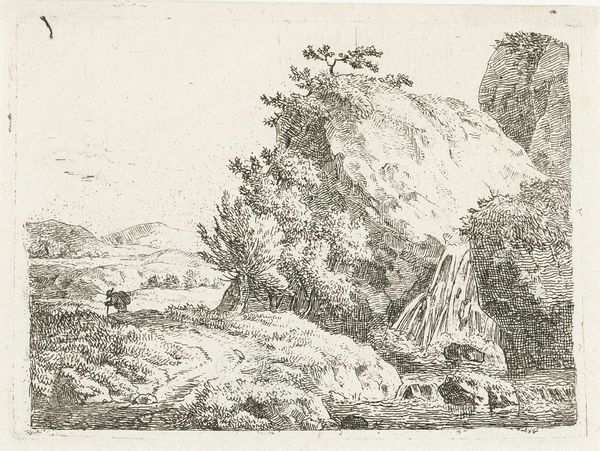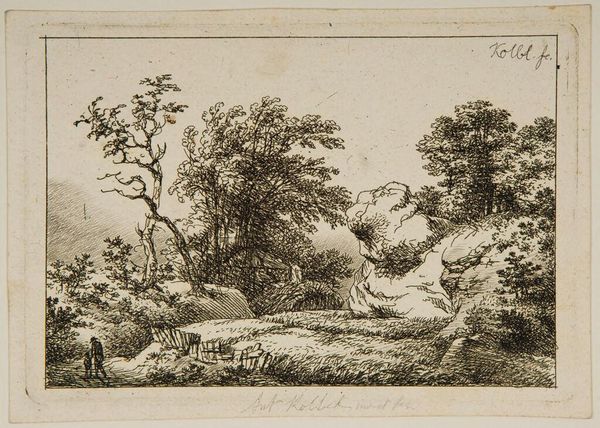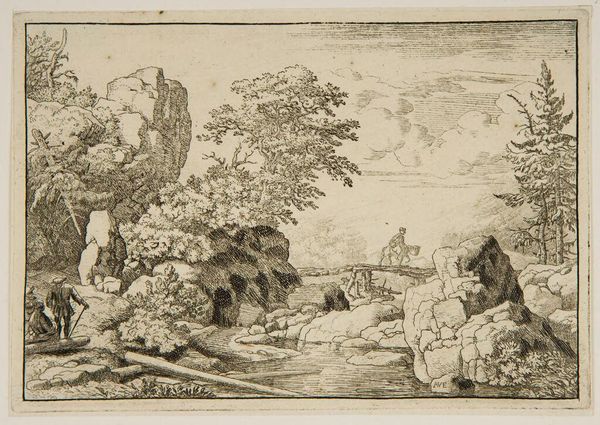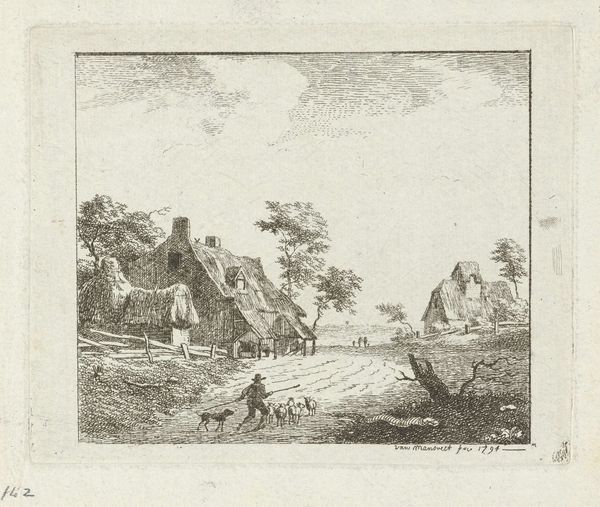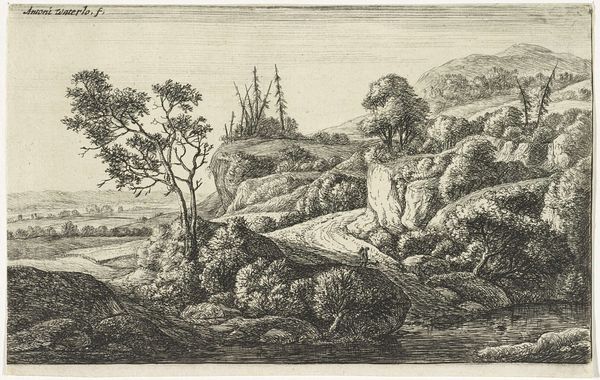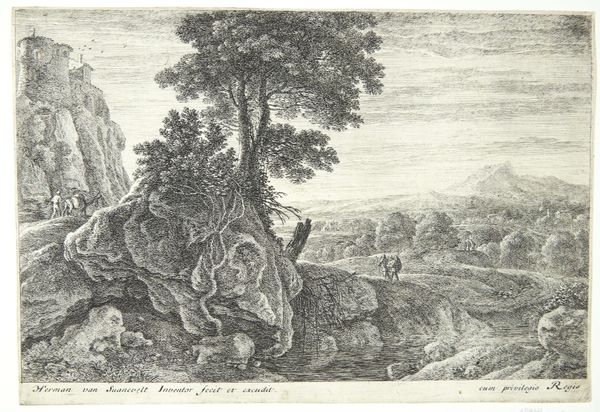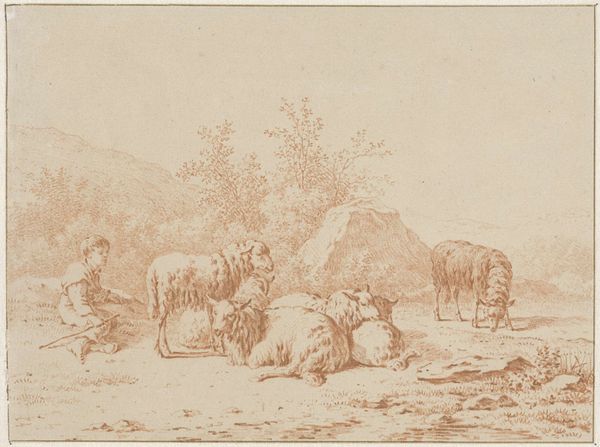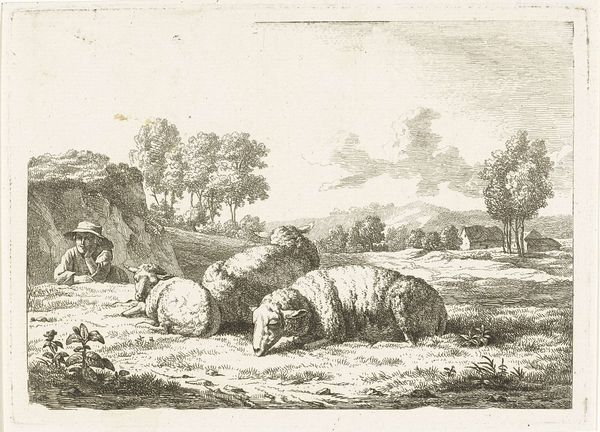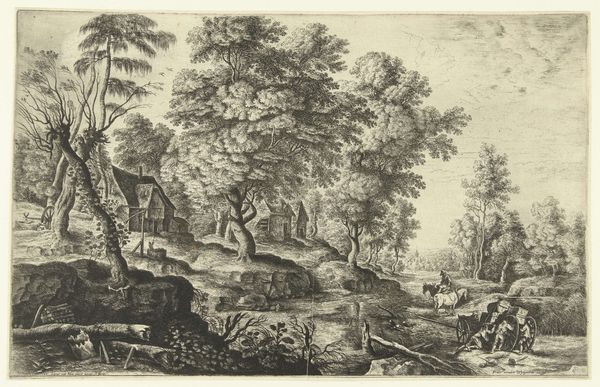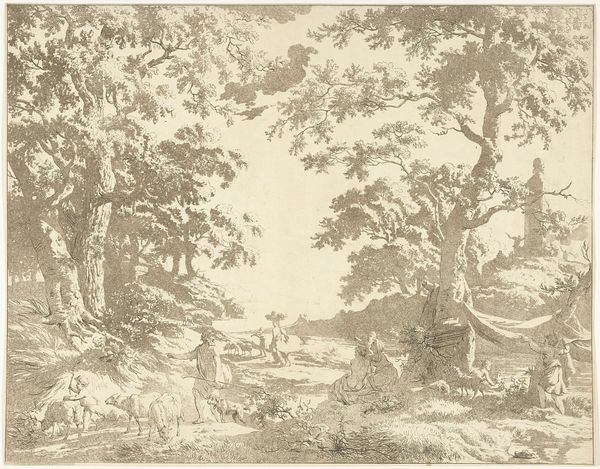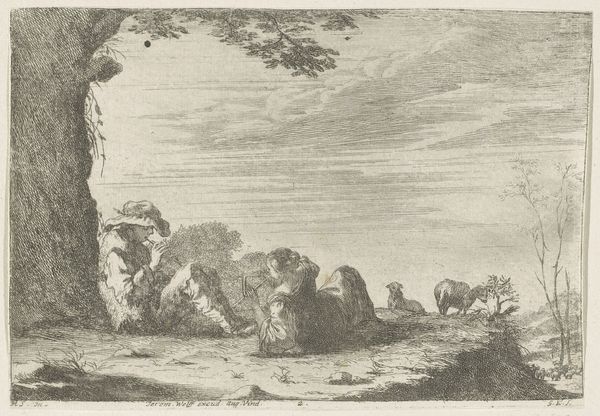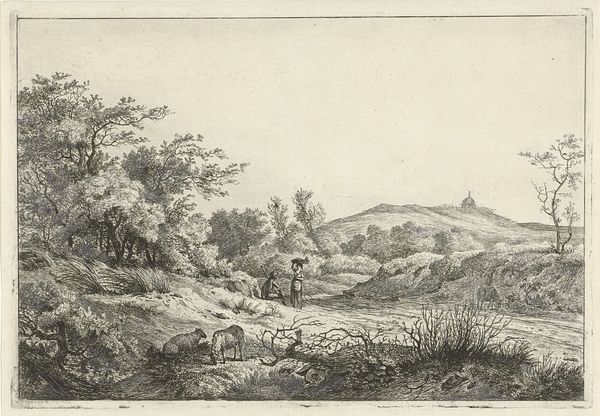
drawing, print, etching
#
drawing
# print
#
pen sketch
#
etching
#
landscape
#
figuration
#
romanticism
#
line
#
genre-painting
#
realism
Dimensions: height 144 mm, width 203 mm
Copyright: Rijks Museum: Open Domain
Curator: Welcome to the Rijksmuseum. Before us is "Four Sheep and a Sleeping Shepherd" by Frédéric Theodore Faber, created around 1828. It's a delicate etching that offers a glimpse into rural life. Editor: It has a really serene quality, doesn't it? The detail, achieved through etching, provides such texture. Curator: Faber worked at a time when Romanticism was deeply entwined with notions of the pastoral, and the industrial revolution made rural life a key symbol. Think about how land use, in particular the rise of industrialised wool production, was reconfiguring society. This image, it could be argued, is a response to those shifts. Editor: You can see the artist's hand so clearly, those cross-hatched lines creating a sense of volume, almost like the thickness of the sheep's wool. It speaks volumes about the labor involved in its production, from raising the sheep to creating the artwork. Curator: The social commentary is interesting, too. We have the shepherd, ostensibly the master of this small domain, yet he's asleep. The sheep, meanwhile, are left to their own devices, seemingly content, but unaware of any potential threats. Editor: I wonder about Faber's own connection to this life. Was he observing from a distance, or did he have a deeper involvement with rural craft? The material culture surrounding sheep farming - the tools, the textiles, everything tied to it, fascinates me. Curator: Certainly, that question of the artist’s positioning is significant, and without detailed biographies, it's hard to determine. However, it resonates with larger themes within art of that time about agrarian labour. Editor: For me, seeing how simple tools and materials can translate the tactile sensation of wool or the rough bark of a tree into this intricate etching - that’s the magic of art. Curator: Agreed. Faber's print opens up a window into 19th-century life, but through the etching medium, it allows for broader narratives about man and animal within the historical context. Editor: It's a reminder that the materials and the labor behind both art and everyday objects are just as important as their aesthetic value.
Comments
No comments
Be the first to comment and join the conversation on the ultimate creative platform.
